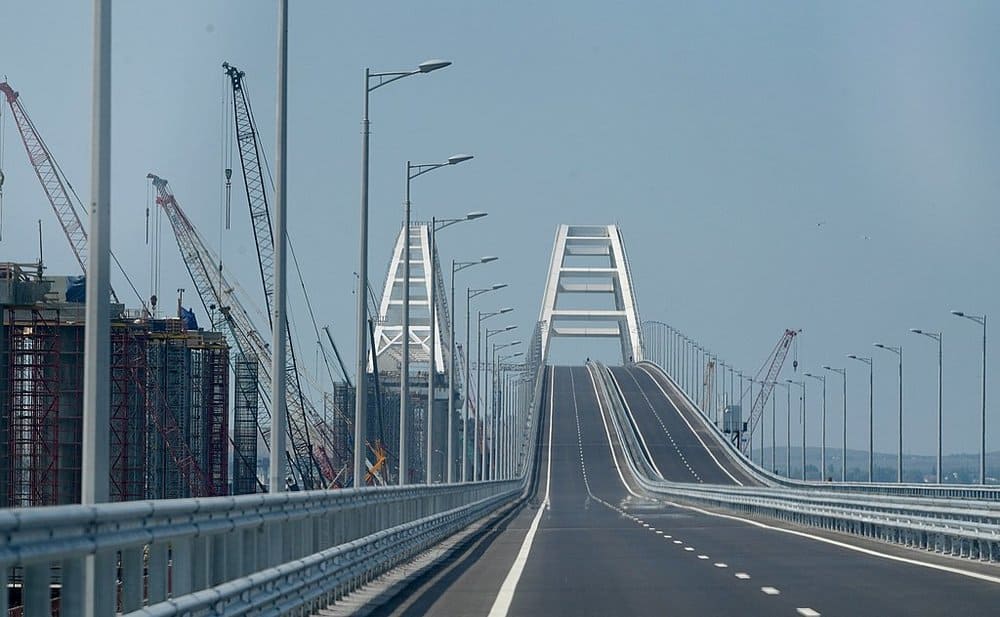
It all started in 2014, when Russia escalated aggression towards its neighbor Ukraine, and annexed the Crimean peninsula. Not stopping with that, Russia also did a military intervention into Crimea, to quell unrest after the fallout of the 2014 Ukrainian revolution. This was met with global condemnation on Russia violating international borders and led a lot of countries including the U.S., to levy sanctions against the state.
This brings us to question why Crimea – a seemingly negligible fraction of landmass when compared to the extent of Russia – is so important for the country, that it would risk sanctions to annex the region. Crimea extends into the Black Sea, and is strategically located to act as a base for the Russian navy. The peninsula served the Russian navy fleet in defeating Georgia during the South Ossetia war in 2008, and demographically is still Russian, with 60% of them identifying as one.
Immediately after the annexation, President Putin flagged off an ambitious parallel bridge project to span the Strait of Kerch between the Taman Peninsula of Krasnodar Krai and the Kerch Peninsula of Crimea. The bridge was estimated to stretch 11.2 miles long, making it Europe’s longest bridge. The Kerch Strait Bridge, or more commonly called the Crimean Bridge was finally opened to road traffic last week by President Putin, with the rail link scheduled to open in early 2019.
Dubbed the “project of the century” the bridge has been in the offing for over a century. It was first suggested for a railway route construction from England to India through the Crimean peninsula in the 1870s, but was turned down due to the potential expense incurred while building it.
Fast forward to today, the U.S. and some European countries have condemned the opening of the bridge, stating that it is a flagrant attempt by Russia to further strengthen its position on a piece of land unlawfully seized from Ukraine.
The Crimean bridge has four road lanes and is expected to witness 14 million people crossing over it every year, which Putin believes would help in integrating Crimea into Russia and not remain a forgotten hinterland. The bridge would be a welcome relief for Crimean residents, who have been largely pro-Russian, but have suffered due to high prices of ration and goods after being carved out of Ukraine.
The trucks can traverse the distance in 20 minutes, which significantly cuts the time taken by ferries to reach Crimea from mainland Russia, thus bolstering the economy of the peninsula. Russian state television projected a 2-3% growth in the Crimean GDP over the next year and also a 15% reduction in the cost of goods. The bridge would also serve well to improve tourism, which has been a hard sell in the years following the annexation.
The economy of Crimea traditionally has been linked to fishing, but ever since the annexation, the industry has suffered crushing losses as mainland Ukraine – its primary consumer – is no longer an option. Its next nearest option is mainland Russia, but the only way for goods to move into the country is via ferries, which proved to be an expensive affair. Ferries, buoyed by their demand in Crimea jacked up prices and demanded nearly $1,000 per truck back in 2014. Though the situation eased off with the Russian government subsidizing the transit to $200 per truck, it still was a lot to ask of the financially weak Crimean populace for an 11-mile journey. Also, the Crimeans could not manage to price their products to be affordable to Russians, as the Russian mainland also had similar fish locally caught on its side of the Black Sea, making the Crimean ‘export’ irrelevant.
But with the opening of the Crimean Bridge, the future looks to be brighter for the peninsula and its people. Tourism and fisheries are expected to be the major gainers, and as Russia pours millions into developing infrastructure and also an airport in Crimea, better air connectivity can also be anticipated in a few years from now.
Stay up-to-date with the latest commentary and insights on FreightTech and the impact to the markets by subscribing.
